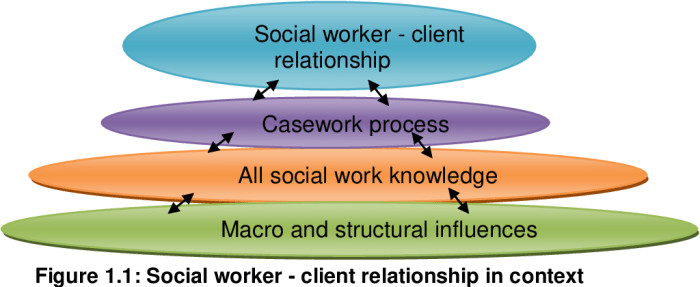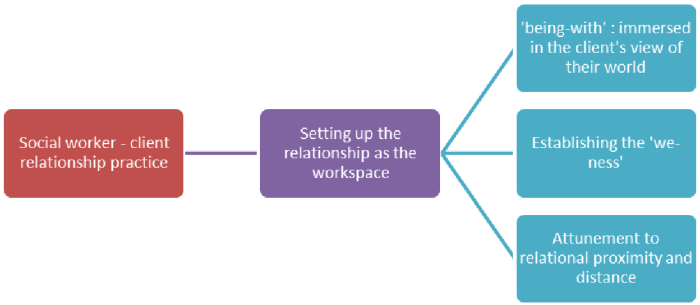What is the client system in social work – In the realm of social work, the concept of the client system takes center stage. It encompasses the individuals, families, groups, organizations, and communities that social workers engage with in their practice. Understanding the client system is paramount for effective social work interventions, as it provides a framework for assessing needs, developing tailored plans, and evaluating outcomes.
This comprehensive guide delves into the intricacies of the client system in social work, exploring its components, types, ethical considerations, and assessment and intervention strategies. Through real-world examples and case studies, we will illuminate the complexities and significance of this concept in shaping social work practice.
Introduction: What Is The Client System In Social Work

The client system in social work refers to the interconnected individuals, groups, and organizations involved in the provision and receipt of social services. It encompasses the client, their family, friends, support networks, and the broader community.
The client system plays a crucial role in social work practice, as it provides a holistic understanding of the client’s situation and facilitates effective interventions.
Components of the Client System

- The client:The individual or group receiving social services.
- The family:The client’s immediate and extended family members.
- Friends and support networks:The client’s close friends, neighbors, and other individuals who provide emotional and practical support.
- The community:The broader community in which the client lives, including local organizations, businesses, and institutions.
These components interact dynamically, influencing the client’s well-being and access to resources.
Types of Client Systems

- Individual client systems:Involve a single client receiving services.
- Family client systems:Focus on the family unit as the primary client.
- Group client systems:Involve a group of individuals with similar needs or experiences.
- Community client systems:Address the needs of an entire community or neighborhood.
Each type of client system presents unique challenges and requires tailored interventions.
Assessment and Intervention
Assessment:Involves gathering information about the client system to understand their needs and strengths.
Intervention:Based on the assessment, social workers develop and implement interventions to address the client system’s needs. These may include:
| Intervention Type | Description |
|---|---|
| Casework | One-on-one counseling with the client. |
| Group work | Counseling with a group of clients with similar needs. |
| Family therapy | Counseling with the client and their family members. |
| Community organizing | Working with the community to address social issues. |
Ethical Considerations

- Confidentiality:Maintaining the privacy of client information.
- Informed consent:Ensuring clients understand and agree to interventions.
- Cultural sensitivity:Respecting and incorporating the client’s cultural values and beliefs.
Ethical principles guide social workers’ interactions with client systems.
Expert Answers
What is the purpose of the client system in social work?
The client system in social work provides a framework for understanding the individuals, groups, and communities that social workers engage with. It helps social workers assess needs, develop tailored interventions, and evaluate outcomes.
What are the different types of client systems in social work?
Client systems in social work can include individuals, families, groups, organizations, and communities. Each type of client system presents unique characteristics and challenges that require tailored interventions.
What are the ethical considerations involved in working with client systems?
Social workers must adhere to ethical principles such as confidentiality, informed consent, and cultural sensitivity when working with client systems. These principles guide practice and ensure the well-being and rights of clients.